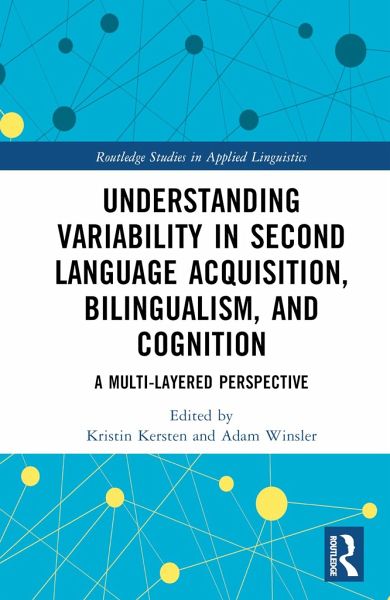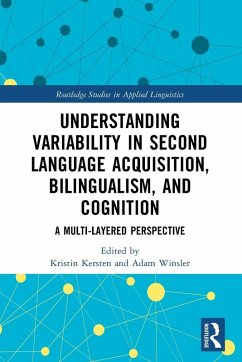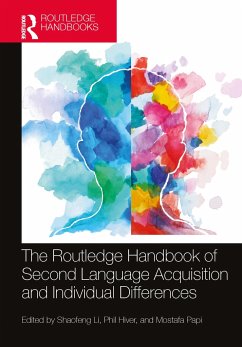
Understanding Variability in Second Language Acquisition, Bilingualism, and Cognition
A Multi-Layered Perspective
Herausgegeben: Kersten, Kristin; Winsler, Adam
Versandkostenfrei!
Versandfertig in 6-10 Tagen
138,99 €
inkl. MwSt.
Weitere Ausgaben:

PAYBACK Punkte
69 °P sammeln!
This collection brings together linguistic, psychological, and sociological perspectives reflecting on the relationships and interactions of the multilayered factors impacting second language development and cognitive competence.The book advocates a system approach as a counterpoint to existing scholarship, which has tended to focus on a small set of variables. The 13 chapters demonstrate the ways in which cognitive and linguistic development are intrinsically linked, occurring within a nested structure of multiple levels: individual neuro-cognitive systems and processes, individual engagement...
This collection brings together linguistic, psychological, and sociological perspectives reflecting on the relationships and interactions of the multilayered factors impacting second language development and cognitive competence.
The book advocates a system approach as a counterpoint to existing scholarship, which has tended to focus on a small set of variables. The 13 chapters demonstrate the ways in which cognitive and linguistic development are intrinsically linked, occurring within a nested structure of multiple levels: individual neuro-cognitive systems and processes, individual engagement with the social world, and the wider social and institutional environments and cultural contexts affecting the belief systems and linguistic conventions of social groups. The volume begins by outlining the theoretical and methodological foundations before moving into a more focused look at the interplay of these different variables at the macro, meso, and micro levels. A final section features two commentary chapters from linguistics and psychology, respectively, synthesizing insights from earlier chapters and situating the collection within broader scholarship on linguistic and cognitive development, theoretical and methodological implications, and discussions of avenues for future empirical research.
This book will be of particular interest to scholars in second language acquisition, psycholinguistics, cognition, psychology, and sociology.
The book advocates a system approach as a counterpoint to existing scholarship, which has tended to focus on a small set of variables. The 13 chapters demonstrate the ways in which cognitive and linguistic development are intrinsically linked, occurring within a nested structure of multiple levels: individual neuro-cognitive systems and processes, individual engagement with the social world, and the wider social and institutional environments and cultural contexts affecting the belief systems and linguistic conventions of social groups. The volume begins by outlining the theoretical and methodological foundations before moving into a more focused look at the interplay of these different variables at the macro, meso, and micro levels. A final section features two commentary chapters from linguistics and psychology, respectively, synthesizing insights from earlier chapters and situating the collection within broader scholarship on linguistic and cognitive development, theoretical and methodological implications, and discussions of avenues for future empirical research.
This book will be of particular interest to scholars in second language acquisition, psycholinguistics, cognition, psychology, and sociology.














